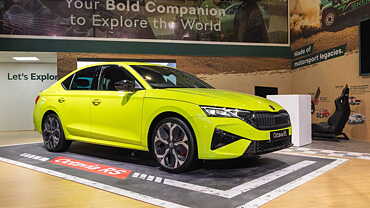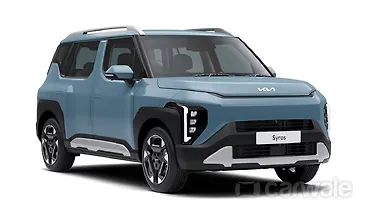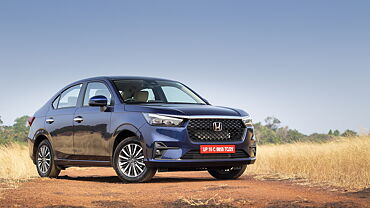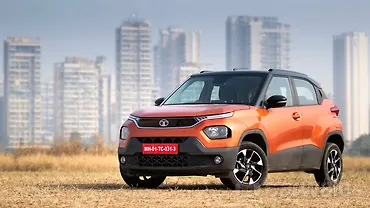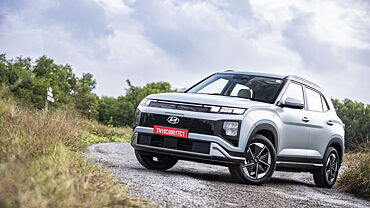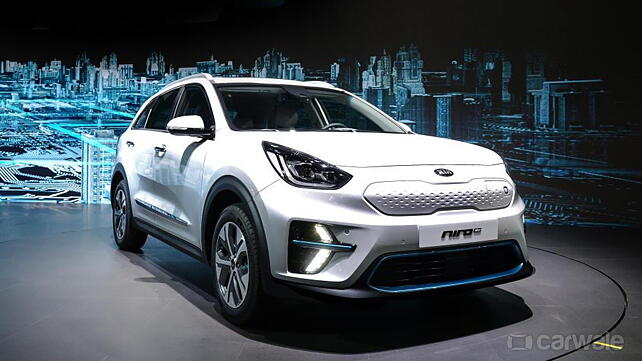
Kia has just taken the covers off the all-new Niro EV. The all-electric offering is currently on display at the 2018 Busan Motor Show in Korea. Kia is claiming a 450km driving range with the Niro EV. Additionally, the brand has also unveiled the SP Concept which was first unveiled at the 2018 Auto Expo here in India.
Designed at Kia’s design centres in California, USA and Namyang, Korea, the Niro EV incorporates the practicality and appeal of a compact crossover in an aerodynamic body with subtly enhanced design elements.
That ‘tiger-nose’ grille features an integrated charging port, bearing a debossed Niro logo. Redesigned air intakes and new arrowhead-shaped LED daytime running lights combine with light blue trim highlights make the EV stand out further. At the back, reshaped bumpers feature similar light blue highlights to those found at the front of the car, while new LED rear lights give the Niro EV its own light signature.
The Niro EV features a new mood lighting system, with subtle lighting illuminating both the centre console and the shifter. One can choose from six colours – white, grey, bronze, red, green and blue. New high-gloss black and blue trim also lines the doors of the Niro EV.
In Europe, the Niro EV will be equipped with a high-capacity 64 kWh lithium-polymer battery pack, providing a driving range of more than 450 kilometres on a single charge with zero emissions. Plugged into a 100 kW fast charger, it takes 54 minutes to recharge the battery to 80 per cent. Buyers will also be able to specify their Niro EV with an optional 39.2 kWh lithium-polymer battery pack, with a range of up to 300 kilometres in a single charge.
Power is provided to the front wheels via a 205bhp motor, producing 395Nm torque from a standstill, enabling the Niro EV to accelerate from 0 to 100 kmph in just 7.8 seconds. The battery pack is located low down in the body, beneath the trunk floor, giving the crossover a low centre of gravity.
Following the Busan Motor Show, the Niro EV will go on sale in Korea in the second half of 2018, and will be introduced in other markets – including Europe – in due course. Sadly, the car is unlikely to make it to the Indian market.











